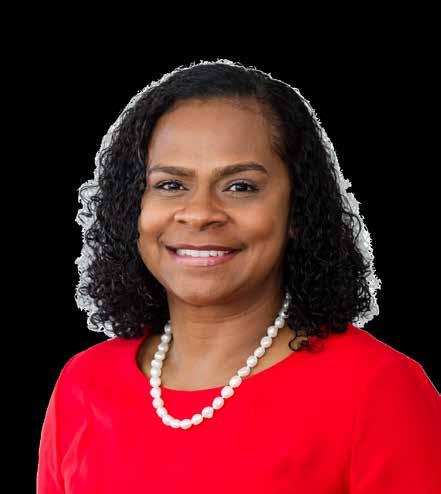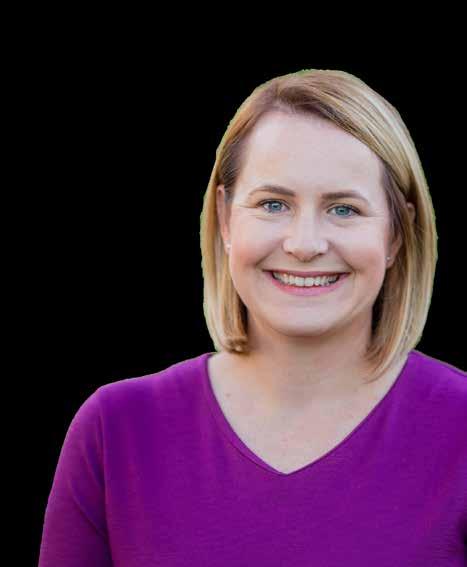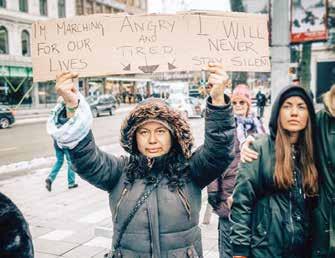
3 minute read
International Women's Day Celebration
Supported by
Mura Kosker Sorority Incorporated
office and end discrimination.
However, less than a week later on 25 March, the tragic ‘Triangle Fire’ in New York City took the lives of more than 140 working women, most of them Italian and Jewish immigrants.
This disastrous event drew significant attention to working conditions and labor legislation in the United States that became a focus of subsequent International Women’s Day events.
1913-1914
On the eve of World War I campaigning for peace,
March 6-7
Russian women observed their first International Women’s Day on 23 February, the last Sunday in February.
In 1914, further women across Europe held rallies to campaign against the war and to express women’s solidarity. For example, in London in the United Kingdom there was a march from Bow to Trafalgar Square in support of women’s suffrage on 8 March 1914.

Sylvia Pankhurst was arrested in front of Charing Cross station on her way to speak in Trafalgar Square.
On the last Sunday of February, Russian women began a strike for “Bread and Peace” in response to the death of over two million Russian soldiers in World War 1.
Opposed by political leaders, the women continued to strike until four days later the Czar was forced to abdicate and the provisional Government granted women the right to vote.
1975

International Women’s Day was marked for a first time by the United Nations in 1975.
In December 1977, the General Assembly adopted a resolution proclaiming a United Nations Day for Women’s Rights and International Peace to be observed on any day of the year by Member States, in accordance with their historical and national traditions.
1996
The UN announced their first annual theme Celebrating the past,
Badu Community l 10 am - 3 pm
Ugarie Community Hall
March 8
Thursday Island Community l 9:30 am - 12:30pm
Morning Tea @ 156 Douglas Street Hall
Badu Community l 8:30 am
Light refreshments @ Ugarie Community Hall
March 10
Mabuiag Community l 3 pm - 7 pm
Community Feasting @ TSIRC Community Hall
St Pauls Community l 6:30 pm - 9:30 pm
Community Feasting @ Demega
Uruba Ware Commun ity Hall
March 11
Hammond Community l 10 am - 2 pm
Light refreshments @ TSIRC Community Hall
Saibai Community l 10 am - 3 pm
Lunch & Activities @ Saibai Community Hall
Poruma Community l 10 am - 2 pm
Morning Tea & Lunch @ Olandi Pearson
Community Memorial Hall
March 15
Iama Community l 10 am - 2 pm
Lunch @ Dawita Cultural Centre
For more information, please call 07 4069 1663 email: info@murakosker.org.au or talk to your local MKS worker.
Planning for the Future which was followed in 1997 with Women at the Peace table, in 1998 with Women and Human Rights, in 1999 with World Free of Violence Against Women, and so on each year.
2000
By the new millennium, there was little mainstream activity occurring for International Women’s Day in most countries.
The world had moved on and, in many spheres, feminism wasn’t a popular topic.
There was urgent work to do – battles had not been won, and gender parity still had not been achieved.
There was a strong need to engage the mainstream masses, and to encourage and support collective action.
2001
Following a year of planning and collaborative conversations, the internationalwomensday. com platform was launched with the specific purpose of re-energising the day and inviting mass participation – a focus which continues to this day – by celebrating and making visible the achievements of women, while continuing the call for accelerating gender parity.
The IWD website adopts an annual campaign theme that is globally relevant for groups and organisations.
The campaign theme provides a framework and direction for annual IWD activity and takes into account the wider agenda of both celebration as well as the call to action for gender parity.
Campaign themes over the years have included: Embrace Equity, Break The Bias, Choose To Challenge, Each for Equal, Balance for Better, Press for Progress, Be Bold for Change, Pledge for Parity, Make It Happen, The Gender Agenda, and more.
Campaign themes for the global IWD website are collaboratively developed each year with a range of stakeholders and widely adopted worldwide across the mainstream.
The IWD website also serves as a significant vehicle for charities, fundraising hefty six figure sums with 100 per cent of donations going direct to charity.

Today, an IWD Charity Alliance is open to femalefocused registered charities from around the world.
2011
2011 saw the 100 year centenary of International Women’s Day – with the first IWD event held exactly 100 years ago in 1911 in Austria, Denmark, Germany and Switzerland.
In the United States, President Barack Obama proclaimed March 2011 to be “Women’s History Month”, calling Americans to mark IWD by reflecting on “the extraordinary accomplishments of women” in shaping the country’s history.
Many celebrities and business leaders actively support the day.
IWD was finally starting to become more mainstream and inclusive, with groups everywhere participating.

2023 And Beyond
The world has witnessed a significant change and attitudinal shift in both women’s and society’s thoughts about women’s equality and emancipation.
Many from a younger generation may feel that ‘all the battles have been won for women’ while many feminists from the 1970s know only too well the longevity and ingrained complexity of patriarchy.
With more women in the boardroom, greater equality in legislative rights, and an increased critical mass of women’s visibility as impressive role models in every aspect of life, one could think that women have gained true equality.







